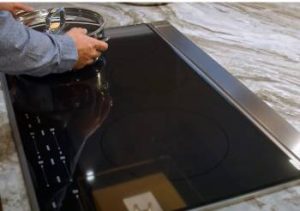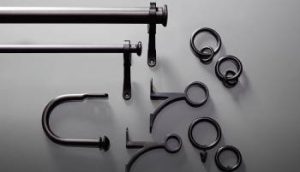There’s something inherently relaxing about a waterfall, right? The tranquil sound of cascading water, the vibrant life it attracts, and its sheer beauty can transform any garden into a peaceful oasis. But, crafting such an elegant spectacle requires some specific materials, one of which is the infamous “Waterfall Foam”.
What if you’re looking for an alternative? Let’s dive right into the captivating journey of exploring Waterfall Foam alternatives.
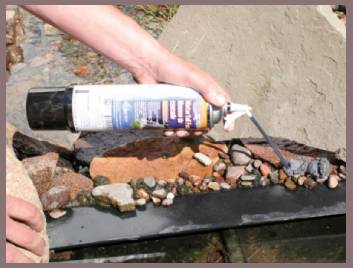
What is Waterfall Foam?
Waterfall Foam, often known as waterfall sealant, is a single-component, moisture-cured foam used in the construction and repair of waterfalls, fountains, and other water features.
It’s primarily used to fill gaps and secure stones in place, creating a smooth, natural-looking water flow and preventing water loss.
Journey to Alternatives: Why the Shift?
Despite its popularity, not everyone is a fan of Waterfall Foam. Some find it tricky to work with or dislike the synthetic look it can sometimes leave. Others prefer a more environmentally friendly option. Hence, the quest for alternatives begins.
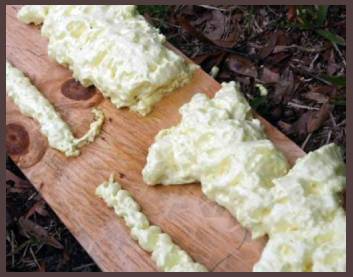
Great Stuff: A Foam Insulation Alternative
“Can you use Great Stuff for waterfalls?” is a question often echoed among waterfall enthusiasts, and the answer is a resounding yes. It’s an expanding foam originally designed for insulation purposes, but has found a niche in the world of waterfalls.
Pros:
- Cost-Effective
Great Stuff is often cheaper than Waterfall Foam, making it a great budget-friendly option.
- Accessibility
It’s readily available in most hardware stores.
Cons:
- Less Durability
Unfortunately, Great Stuff may not be as durable when constantly exposed to water.
- Synthetic Appearance
Similar to Waterfall Foam, it can leave an artificial look if not properly concealed.
Read More: About Pompeii Quartz
Using Mortar: The Solid Choice

While a less conventional approach, mortar can be used to secure rocks and seal a waterfall.
Pros:
- Long-Lasting
Mortar has superior durability, making it excellent for long-term projects.
- Natural Appearance
Once dried, it seamlessly blends with rocks, creating a more natural look.
Cons:
- Difficult to Adjust
Mortar is not friendly to adjustments or changes once it has set.
- Requires Skill
Applying mortar requires a bit more technical skill and effort.
The Expanding Foam Controversy
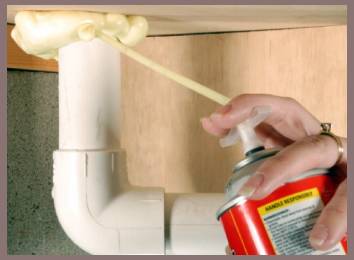
Expanding foam has a dual identity in the world of waterfalls. On one hand, it’s celebrated for its sealing capabilities. On the other, there are those who question, “Can you use expanding foam in a pond?”
Pros:
- Versatile
Expanding foam is great for filling gaps and crevices, creating a more even water flow.
- Water-Resistant
It’s watertight, providing an excellent seal.
Cons:
- Potential Toxicity
Some are concerned about the possible harm it may cause to aquatic life, especially when uncured.
Read More: About Schaub Hardware
FAQS: Addressing Your Queries
Can you use great stuff for waterfalls?
Yes, you can. It’s cost-effective and easily available, but may lack durability and can leave an artificial appearance if not properly applied.
What can I use to seal a waterfall?
Several materials can be used to seal a waterfall, including Waterfall Foam, Great Stuff, expanding foam, and even mortar. Each comes with its pros and cons, so it depends on your needs and preferences.
Can you use expanding foam in a pond?
Yes, you can, but care must be taken to ensure it’s cured fully before exposing it to aquatic life, as the uncured foam can potentially harm them.
What is waterfall foam?
Waterfall Foam is a moisture-cured sealant used in the construction and repair of water features. It’s used to secure stones in place, fill gaps, and create a smooth, natural-looking water flow.
Can I use expanding foam for a waterfall?
Yes, expanding foam can be used for a waterfall. It’s watertight and useful for sealing gaps and cracks, but it’s important to make sure it is fully cured before using it in a pond or other water feature where aquatic life might be present.
Is expanding foam watertight?
Yes, expanding foam is watertight. This makes it a good choice for sealing a waterfall and ensuring a smooth flow of water.
Conclusion: Finding the Right Foam for You
Choosing between Waterfall Foam and its alternatives depends on various factors, including your budget, the look you want to achieve, and your concern for environmental impact. It’s essential to weigh the pros and cons of each, considering the nature of your project and its long-term sustainability.
Water features like waterfalls are not just about aesthetics. They are a testament to the balance between art and nature, adding life to our gardens. As such, the materials we choose play a vital role in that symbiosis. So, whether it’s the versatile Great Stuff, the solid choice of Mortar, or the expansive world of expanding foam, may your choice bring you a waterfall of joy.
The journey of creating waterfalls is as beautiful as the falls themselves, dotted with decisions that mold its final look. But remember, the ultimate goal is the harmony between your waterfall and the life it breathes into your garden. After all, each droplet of water tells a story, and each choice we make contributes to that tale.


